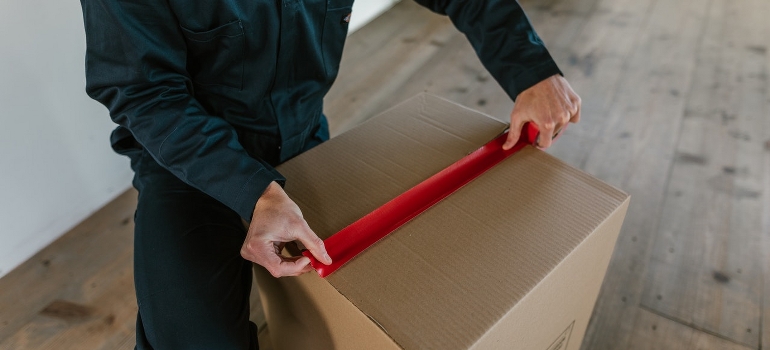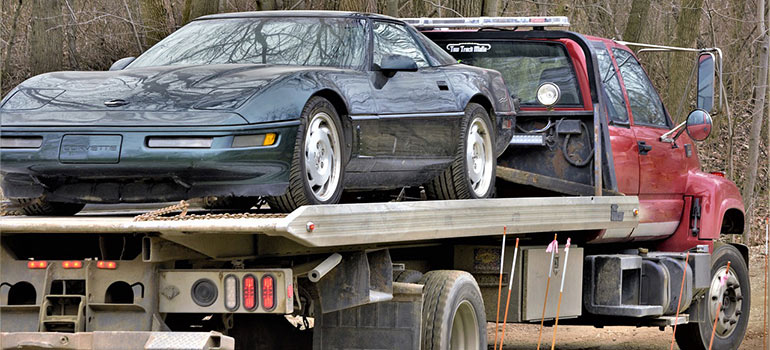How to Plan a Long Distance Move – Step by Step Guide
Preparing for a long distance move is crucial to ensuring a smooth and stress-free transition. When planning for a move, it’s important to consider all aspects, including packing, transportation, and logistics. By taking the time to properly prepare, you can avoid many common moving pitfalls and ensure that everything arrives at your new home in good condition. This means taking the time to organize your belongings, properly labeling boxes, and hiring a reputable moving company. Additionally, it’s important to consider any special requirements, such as permits or customs documentation if moving internationally. With careful planning and attention to detail, a long distance move can be a successful and relatively painless experience. To help you, Best Cross Country Movers will gladly show you how to plan a long distance move.
Here are the steps that you need to take when you want to plan a long distance move
Planning a long distance move can be a daunting task, but with careful planning and organization, it can be less stressful. Here is a detailed list of steps to help you plan your long distance move:
- Research your new location – Research your new location, including the cost of living, employment opportunities, and any local laws or regulations that may be different from your current location.
- Choose a moving company – Research moving services and obtain multiple quotes. Choose a reputable company that is licensed, insured, and experienced in long distance moves.
- Create a budget – Create a detailed budget for your move, including the cost of the moving company, packing materials, transportation, and any other expenses.
- Purge and organize – Sort through your belongings and decide what to keep, donate, sell, or throw away. Start organizing and packing non-essential items as early as possible.
- Notify important parties – Notify important parties such as your employer, bank, utility companies, and post office of your upcoming move.
- Obtain necessary documents – Obtain necessary documents such as medical records, school records, and other important paperwork.
- Pack your belongings – Pack your belongings carefully and label each box clearly. Use quality packing materials to ensure your belongings are protected during transportation.
- Arrange transportation – Arrange transportation for your vehicle(s) and any other items that cannot be transported by the moving company.
- Finalize details – Confirm all details with your moving company, including dates, times, and payment arrangements.
- Prepare for arrival – Prepare for your arrival in your new location by arranging for any necessary services, such as utilities, internet, and cable.

Researching your new neighborhood
When trying to plan a long distance move, it’s important to research your new location to ensure a smooth transition. One way to start is by browsing online resources to learn about the area’s weather, cost of living, and local amenities. This can help you make the right decision about where to move and what to expect afterward. You can also explore social media groups or local forums to connect with people who live in the area and gain insights into their experiences. It’s a good idea to research schools and healthcare options, as well as transportation and commute times, to help you plan your daily routine.
Additionally, if you’re moving for work, researching local job opportunities and the job market can help you make informed decisions about your career. By taking the time to research your new location, you can make the most of your move and feel confident in your decision to start a new chapter in a new place.
How to choose movers?
When it comes to choosing a moving company for your long distance move, there are several factors to consider to ensure a smooth and successful relocation. First and foremost, it’s important to do your research and choose reputable residential movers with a proven track record of excellent service. Look for companies with positive reviews and ratings from previous customers, and consider checking with the Better Business Bureau to ensure that the company has a good standing. It’s also important to choose a company that is licensed, insured, and bonded to protect your belongings in the event of any damage or loss.
Moving companies offer a variety of services so make sure that you pick those that suit you
Also, consider the company’s level of experience and expertise in long distance moves, and ask about any additional moving solutions they offer, such as packing and unpacking or storage services. If you are moving your business, look for commercial movers. Finally, be sure to get a detailed estimate from the company and compare it to other quotes to ensure you are getting a fair price. By taking the time to research and choose a reputable moving company, you can have peace of mind knowing that your belongings are in good hands and your move will be a success.

Prepare a moving budget
Preparing a moving budget is essential to avoid unexpected expenses during the moving process. Start by calculating the cost of hiring professional movers or renting a moving truck. Consider additional expenses such as packing supplies, insurance, and storage. Make sure to factor in any hidden costs, such as cancellation fees or additional mileage charges. Research different companies and compare prices to ensure you are getting the best deal. Be realistic and set aside extra money in case of unforeseen expenses. Having a detailed moving budget will help you stay organized and financially prepared for your move.
How much does an average long distance move cost?
The cost of an average long distance move can vary greatly depending on several factors, such as the distance of the move, the size of the move, the time of year, and additional services required. The average cost of a long distance move is around $4,300 for a distance of 1,225 miles, based on an average weight of 7,400 pounds. Keep in mind that this is just an estimate and your actual cost may be higher or lower depending on your specific circumstances.
Decluttering before the move
Before moving, it’s important to declutter your home and get rid of anything you no longer need. Start by going through your belongings and separating them into three piles: keep, store, donate, and discard. Then, organize the items you want to keep, whether you are taking them with you or you are using storage services to store them, making sure to label boxes clearly and group similar items together. This will not only make the moving process more efficient, but it will also help you save money on packing materials and transportation costs. Taking the time to purge and organize before your move can make settling into your new home much easier and less stressful.
How to get rid of excess items after decluttering?
After decluttering and organizing your belongings, it’s important to dispose of excess items properly. Consider holding a garage sale to sell items you no longer need or want. You can also sell items online through various platforms. Donating items to a charity is another option and can help those in need. Be sure to research the organizations and what items they accept. Proper disposal of items like old electronics and hazardous materials is also important, so be sure to follow local regulations. Remember that decluttering and disposing of excess items can help simplify your move and ensure that you’re only bringing the items that you truly need and want to your new home.

Notifying everyone about your move
Notifying important parties about your move is a crucial step in the moving process. So do not forget to add that item while you plan your long distance move. Start by updating your address with the post office, utility companies, and your employer. Don’t forget to notify your bank, credit card companies, and any other financial institutions. You should also inform your healthcare providers, including doctors, dentists, and veterinarians if you have pets. If you have children, you’ll need to inform their school and arrange for their records to be transferred. Finally, make a list of all other important parties that should be notified, such as insurance companies, subscriptions, and any other services that you regularly use.
Obtaining necessary documents
It is essential to research the specific documents required for your new location and to obtain them in a timely manner. Important moving documents may include identification cards, driver’s licenses, passports, and other legal documents. Be sure to keep these documents in a secure and easily accessible place during the move. Planning ahead and obtaining necessary documents early can help to ensure a smoother and less stressful transition to your new home.
Packing for a move
When packing your belongings for a move, it’s important to be organized and strategic. Especially if you decided to make it harder for yourself by not hiring professional packing services. Start by decluttering. Then, gather all the necessary packing supplies, such as boxes, tape, and bubble wrap. Pack your items in a logical order, starting with the least frequently used items first. Label each box with the contents and room it belongs in to make unpacking easier. Use padding and protective materials for fragile items, and consider hiring professional movers for large or valuable items. Don’t overpack boxes, and remember to take essential items with you, such as medications and important documents.

Necessary packing supplies to prepare
Here are the necessary moving supplies you will need to prepare:
- Cardboard boxes in various sizes
- Bubble wrap
- Packing paper or newspaper
- Packing tape
- Stretch wrap
- Plastic bags
- Furniture pads or blankets
- Labels and markers
- Scissors and box cutters
How to transport your vehicle?
When trying to plan a long distance move, it’s essential to think about arranging transportation for your vehicle and other items that cannot be transported by the moving company. First, consider the distance of the move and the condition of your vehicle to determine the most suitable transportation method. Shipping your car through a car shipping company can be a good option, but it’s important to research the company and read reviews to ensure quality service.

Besides, consider whether you’ll need to transport any other items such as boats or motorcycles, and research specialty transportation companies if necessary. Don’t forget to prepare your vehicle for transportation by cleaning it, removing personal belongings, and disabling any alarms or tracking systems. With careful research and planning, arranging transportation for your vehicles and other items can be a smooth and stress-free process.
Confirming all details with your moving company
Don’t forget to confirm all the details with your chosen moving company. Double-check the moving date, time, and location, as well as the delivery schedule, payment terms, and any other pertinent information. Confirming these details can ensure that there are no misunderstandings or surprises on moving day.
Also, it is always a good idea to keep all communications with the moving company in writing, such as through email, to have a record of the agreement in case any issues arise. Taking these steps can help you feel more confident and prepared for your upcoming move.
Things to do in order to prepare for your arrival in your new location
You should also prepare for your arrival in your new location. First, make sure you have a plan for the first few days. This includes booking a hotel or temporary housing, arranging transportation, and having essentials, such as toiletries and clothes, easily accessible. It’s also a good idea to research local resources and services, like grocery stores and medical facilities, and to familiarize yourself with the area.

Moreover, consider updating your address and forwarding mail to your new address. Don’t forget to schedule utility and service installations, such as internet and cable, before your arrival to ensure a smooth transition. Lastly, take time to explore your new community and meet new people, which can help you feel more at home. By following these steps, you can make your transition to your new location as smooth as possible.
Planning your move is crucial if you want to avoid unnecessary stress
And that is how to plan a long distance move. As you can see there are many steps that you need to think about. However, investing some time into making a good plan will help you immensely and ensure that you avoid unnecessary stress along the way. Naturally, having reliable movers by your side is crucial. So make sure that you do this part properly. If you are not sure where to find them, our website is one of the best resources online that can help you with this task.

